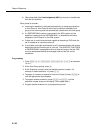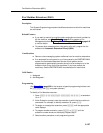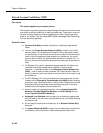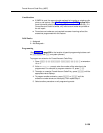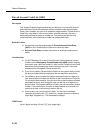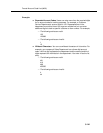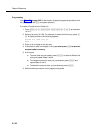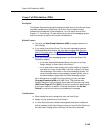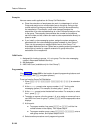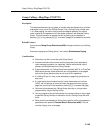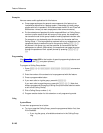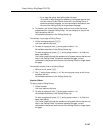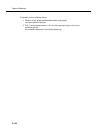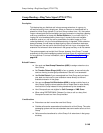
Group Call Distribution (#206)
5-143
Group Call Distribution (#206)
Description
This System Programming procedure assigns outside lines to Hunt Groups. Doing
so allows outside calls to ring directly into a Hunt Group instead of being
answered and transferred by the receptionist. You can assign lines to Hunt
Groups 1–7. (Hunt Group 7 is used exclusively for the voice messaging system,
and Hunt Group 8 is used for fax transfer and detection.)
Related Features
■ You must use Hunt Group Extensions (#505) to assign extensions to
Hunt Groups.
■ If you assign lines to Hunt Group 7 for the voice messaging system’s
Automated Attendant Service, you may want to adjust when the lines
should ring in the group. See VMS Hunt Delay (#506) and VMS Hunt
Schedule (#507) for more information.
■ If you are using a voice messaging system, you have two Group Call
Distribution options:
— If you want Automated Attendant Service for some or all lines,
Assign (setting 1) those lines to Hunt Group 7.
— If you want calls to route directly to the voice mailbox of a specific
user after four rings, choose VMS Line Cover (setting 3) for those
lines
and
assign a line owner in the voice messaging system. For
more information about voice messaging system options, refer to
the documentation shipped with the voice messaging system.
As an alternative to the VMS Line Cover setting, you can use Line
Coverage Extension (#208) with VMS Cover. This provides more
flexibility because it lets you specify the number of times calls ring (using
VMS Cover Rings (#117) or (#321)) at the user’s extension before going
to the user’s mailbox. In addition, if the user’s extension has Do Not
Disturb on, calls on the line can go immediately to coverage.
Considerations
■ Each outside line can be assigned to only one Hunt Group.
■ Assign only fax extensions to Hunt Group 8.
■ If a Hunt Group that has outside lines assigned receives an outside call
and all members of that Hunt Group are busy (or have Do Not Disturb on),
the caller hears ringing, which continues until the call is answered.




